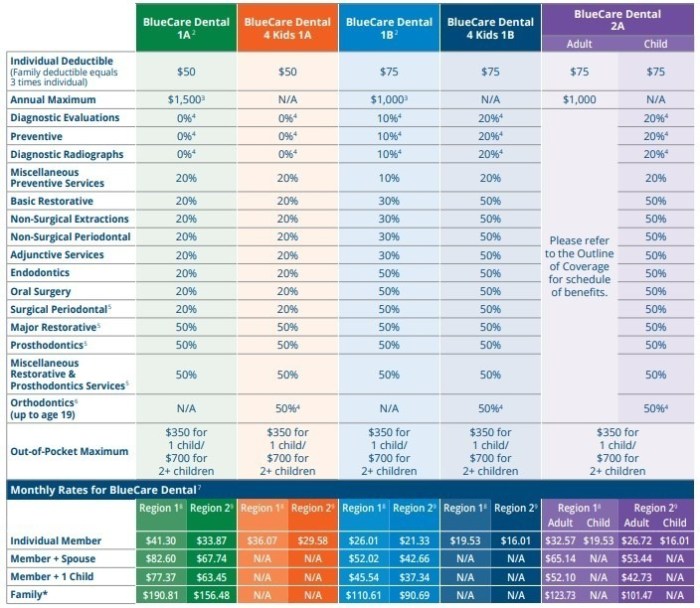
As we approach 2025, understanding individual dental plans becomes essential for consumers seeking personalized dental care. These plans are designed to cater to individual needs, offering a range of benefits that often surpass those of group plans. With the rising costs of dental services, having a solid grasp of what individual dental plans can offer is crucial for making informed choices.
This overview will explore the key features of individual dental plans available in 2025, highlighting their advantages, comparing them with other insurance types, and detailing the factors influencing consumer choices. From assessing out-of-pocket costs to evaluating coverage options, this guide aims to equip you with the knowledge needed to navigate the landscape of dental insurance effectively.
Overview of Individual Dental Plans for 2025

In 2025, individual dental plans have evolved to meet the diverse needs of consumers seeking personalized dental care. These plans offer flexibility and tailored benefits that can significantly enhance oral health management. As individuals become more aware of their dental health needs, the options available in individual dental plans are designed to provide comprehensive coverage, catering to varying budgets and preferences.Key features of individual dental plans in 2025 include a variety of coverage options, ranging from basic preventive care to extensive restorative services.
Plans are increasingly emphasizing coverage for preventive treatments, such as cleanings and check-ups, while also offering benefits for major procedures like crowns and root canals. This trend reflects a growing understanding of the importance of preventive care in maintaining overall dental health.
Benefits of Choosing Individual Dental Plans
Opting for an individual dental plan over a group plan can provide several advantages. Individual plans often come with greater flexibility and customization, allowing individuals to select coverage that aligns closely with their personal health needs. Additionally, these plans frequently offer more competitive pricing for specific services, unlike group plans that may impose higher costs for less tailored coverage. Some notable benefits include:
- Personalized Coverage: Individual plans can be specifically tailored to meet unique dental needs, unlike group plans that may follow a one-size-fits-all approach.
- Portability: Individual plans remain with the member regardless of employment status, ensuring continuous coverage.
- Wide Range of Providers: These plans usually provide access to a broader network of dental providers, allowing consumers to choose practitioners they trust.
- Preventive Focus: Enhanced emphasis on preventive care leads to cost-effective savings in the long run, promoting better oral health.
Examples of Popular Individual Dental Plans in Different States
Several individual dental plans have gained popularity across various states in 2025, each offering unique benefits and coverage options that cater to local populations. Here are a few examples:
- California: Delta Dental’s Individual Plan features comprehensive coverage including preventive, basic, and major services, with a focus on affordability.
- Texas: Guardian Dental provides customizable plans with options for add-on services that cover orthodontics and cosmetic dentistry, appealing to diverse dental needs.
- New York: Cigna Dental offers plans that include no waiting periods for preventive services, making it an attractive option for those eager to utilize their benefits immediately.
- Florida: Humana Dental boasts a robust network of providers and flexible plan designs that allow members to adjust their coverage as needed.
As individual dental plans continue to adapt, consumers are empowered to take charge of their oral health with options that best suit their lifestyles and financial considerations.
Comparisons with Other Insurance Types

Individual dental plans offer a unique approach to dental care coverage that often stands apart from other types of insurance, such as health insurance and flood insurance. Understanding these comparisons can help individuals make informed decisions about their insurance needs and overall health security. This section explores how individual dental plans differ from health insurance and flood insurance, and the role of disability insurance in providing comprehensive health coverage.
Comparisons with Health Insurance
While both individual dental plans and health insurance provide essential coverage, their structures and costs vary significantly. Health insurance typically covers a wide range of medical services, including hospital visits, surgical procedures, and preventative care. In contrast, individual dental plans primarily focus on dental care, encompassing routine check-ups, cleanings, and necessary procedures like fillings or extractions.
Costs associated with health insurance are generally higher due to the broader scope of services. According to the Kaiser Family Foundation, the average annual premium for employer-sponsored health insurance for family coverage was approximately $22,000 in In contrast, individual dental plans can range from $300 to $600 annually, depending on the coverage level and provider. This price disparity highlights a key difference: individuals seeking affordable dental care may find plans more accessible than comprehensive health insurance.
Dental insurance premiums are typically lower, but coverage is often more limited compared to general health insurance.
Differences with Flood Insurance
Flood insurance is designed to protect property from water damage, focusing on physical assets rather than individual health needs. In contrast, individual dental plans prioritize preventive and restorative dental care, making it essential for maintaining oral health. The risk management strategies differ greatly between these two types of insurance. Flood insurance is often mandated for properties in high-risk flood zones, while individual dental plans are optional but highly recommended for proactive oral health management.
Flood insurance addresses catastrophic events with potentially high financial impacts, whereas individual dental plans promote routine care and early intervention to prevent serious dental issues. This preventive approach can lead to lower overall healthcare costs in the long run, reducing the need for more extensive procedures that arise from neglecting oral health.
Complementing Coverage with Disability Insurance
Disability insurance serves as a financial safety net in case of unexpected health challenges, ensuring individuals can continue to cover essential expenses, including dental care. While individual dental plans focus on specific dental treatments, disability insurance provides a broader safety net by replacing lost income when an individual cannot work due to illness or injury. This complementary relationship is vital for overall health security.
For example, if someone experiences a disabling condition that prevents them from working, their disability insurance can help cover ongoing expenses, including premiums for their dental plan. This integration allows individuals to maintain both their oral health and overall financial stability during challenging times. As per the Social Security Administration, approximately 1 in 4 of today’s 20-year-olds will become disabled before reaching retirement age, highlighting the importance of having both types of insurance for comprehensive health and financial protection.
Having both individual dental and disability insurance ensures a holistic approach to health security.
Key Factors Influencing Individual Dental Plan Choice
Selecting the right individual dental plan in 2025 requires careful consideration of multiple factors that can significantly affect both coverage and costs. Understanding these key elements can help consumers make informed decisions that best suit their dental health needs and financial situations.One of the most crucial aspects when evaluating dental plans is the balance between coverage options and out-of-pocket costs.
Consumers need to assess the benefits offered by different plans while considering how much they will need to spend from their own pockets for various services. This analysis can influence the overall satisfaction with the chosen plan and the financial burden that may arise due to unexpected dental procedures.
Factors to Consider When Choosing a Dental Plan
Several critical factors can impact the choice of an individual dental plan. These include:
- Premiums: The monthly payment required for the dental plan can vary greatly. A lower premium may seem appealing but could lead to higher out-of-pocket expenses later.
- Coverage Limits: Each plan has specific limits on coverage amounts for different procedures. Consumers should thoroughly review these limits to avoid surprises.
- Deductibles: This is the amount that must be paid out-of-pocket before the insurance kicks in. Plans with high deductibles may offer lower premiums but can lead to higher costs for the consumer.
- Type of Coverage: Understanding what services are covered is essential. Plans typically vary in how they handle preventive care, basic procedures, and major work.
- Network Providers: The availability of dentists within the plan’s network can significantly affect both costs and convenience. Out-of-network services often come with higher fees.
Assessing these factors helps consumers understand the trade-offs involved with each plan, leading to more informed choices.
Impact of Out-of-Pocket Costs on Decision-Making
Out-of-pocket costs, which include deductibles, copayments, and coinsurance, play a pivotal role in how consumers select their dental plans. High out-of-pocket expenses can deter individuals from seeking necessary dental care, leading to long-term health issues.
“The cost of dental care affects not only the choice of insurance but also the overall decision to seek treatment. Opting for a plan with a comprehensive coverage structure can minimize future expenses.”
When evaluating plans, potential enrollees should simulate potential costs based on their expected dental needs. For instance, a person anticipating significant dental work may benefit from a plan with higher premiums but lower out-of-pocket costs. Conversely, someone seeking primarily preventive care might find lower premium plans more suitable.
Evaluating Coverage Options and Network Providers
Determining the right fit in terms of coverage and network providers is essential for maximizing the benefits of an individual dental plan. Consumers should consider the following methods:
- Plan Comparison Tools: Many online resources allow users to compare different dental plans side-by-side, highlighting differences in coverage, costs, and provider networks.
- Provider Directories: Checking the plan’s provider directory can ensure that preferred dentists and specialists are included, which can save costs and improve accessibility.
- Customer Reviews and Ratings: Exploring reviews from current or past members can provide insight into the affordability and effectiveness of a plan’s coverage.
- Consultation with Insurance Agents: Speaking with knowledgeable agents can provide personalized advice based on individual needs and financial situations.
Evaluating these aspects thoroughly can lead to a more satisfying dental insurance experience, potentially improving overall dental health and financial wellbeing.
End of Discussion
In summary, individual dental plans in 2025 provide a tailored approach to dental care that can lead to significant savings and better health outcomes. By understanding the nuances of these plans and how they compare to other insurance types, you can make empowered decisions for your dental health. As you consider your options, keep in mind the critical factors that will influence your choice, ensuring your selected plan aligns with your specific needs and budget.
Expert Answers
What are the key benefits of individual dental plans?
Individual dental plans typically offer more flexibility in coverage and provider choice, often resulting in tailored benefits compared to group plans.
How do I evaluate the network providers for these plans?
Research the list of network providers associated with each plan, check their credentials, and read reviews to ensure quality care.
Are there waiting periods for treatments in individual dental plans?
Many individual dental plans may impose waiting periods for certain services, so it’s important to read the policy details carefully.
Can individual dental plans cover preventive care?
Yes, most individual dental plans offer coverage for preventive care, such as routine check-ups and cleanings, often at little to no cost.
What should I consider when choosing an individual dental plan?
Consider factors like coverage options, out-of-pocket costs, provider networks, and your specific dental care needs when selecting a plan.







